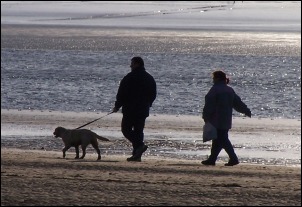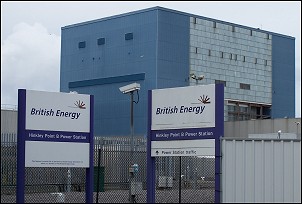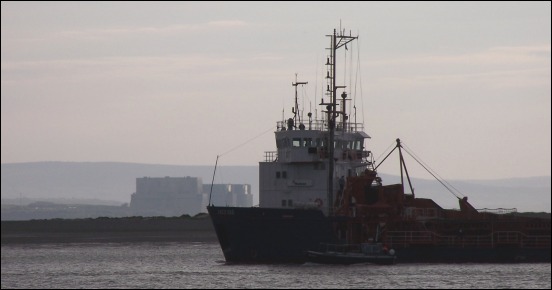Increased monitoring of beaches and sea water around Hinkley Point nuclear power station has shown radiation levels to be within acceptable limits, the Environment Agency announced on Friday (April 28th).
Last year, the Agency stepped up its monitoring of the site after a member of the public reported abnormal radiation readings at nearby Kilve Beach. The person used a Geiger Counter after his pet dog died after it had been exercised on Kilve Beach.
British Nuclear Group, the operators of Hinkley Point, are authorised by the Environment Agency to discharge small amounts of radioactivity into the Bristol Channel.
 The radioactivity is contained in liquid effluents. Discharge levels are closely regulated by the Agency under the Radioactive Substances Act 1993. The Agency routinely monitors Kilve Beach for radioactivity as part of its regulation and monitoring of the power station and surrounding area.
The radioactivity is contained in liquid effluents. Discharge levels are closely regulated by the Agency under the Radioactive Substances Act 1993. The Agency routinely monitors Kilve Beach for radioactivity as part of its regulation and monitoring of the power station and surrounding area.
In September 2005 Environment Agency officers visited Kilve Beach with the member of public who had earlier reported high levels of radioactivity. Neither he or the Agency specialists could reproduce the levels that were claimed to have been found.
As a precautionary measure Agency scientists carried out further monitoring between October 2005 and March 2006. On each occasion, radioactivity was found to be within background levels. Gamma dose rates were also found to be within the normal range.
The checks on Kilve Beach followed routine discharges from Hinkley Point. The monitoring assessed radiation at the strand line, at the low tide mark and across the beach in general over a three day period.
At the same time as the Environment Agency checks, routine monitoring carried out by the site operators revealed slightly elevated levels of Strontium-90 in two sediment samples. Although detectable, they were within safe limits and did not pose a threat to the environment or human health.
 The final tests carried out by the Agency between February 27 – March 1 included other local beaches including Burnham-On-Sea, Weston-super-Mare, Steart Flats, Watchet Harbour, Blue Anchor, Hinkley Point Beach and the River Parrett. Once again, no activity above background radiation levels were detected.
The final tests carried out by the Agency between February 27 – March 1 included other local beaches including Burnham-On-Sea, Weston-super-Mare, Steart Flats, Watchet Harbour, Blue Anchor, Hinkley Point Beach and the River Parrett. Once again, no activity above background radiation levels were detected.
“The Strontium-90 was present at extremely low levels and within normal limits. However, as a precaution we have advised Hinkley A site operators to cease certain pond operations until we are satisfied that sufficient measures are in place to ensure levels of radioactivity are kept to a minimum,” said Anil Koshti for the Environment Agency.
British Nuclear Group were required to carry out quarterly monitoring at locations around the coastal area of Hinkley Point. The Agency has now asked British Nuclear Group to increase this sampling to include Kilve Beach in the quarterly monitoring, and to carry out analysis for Strontium 90 in sediment samples from all the eleven sampling locations.
As an additional precaution, the Environment Agency has increased its independent gamma dose surveys to quarterly instead of six-monthly and made changes to its sediment and effluent monitoring programmes.







